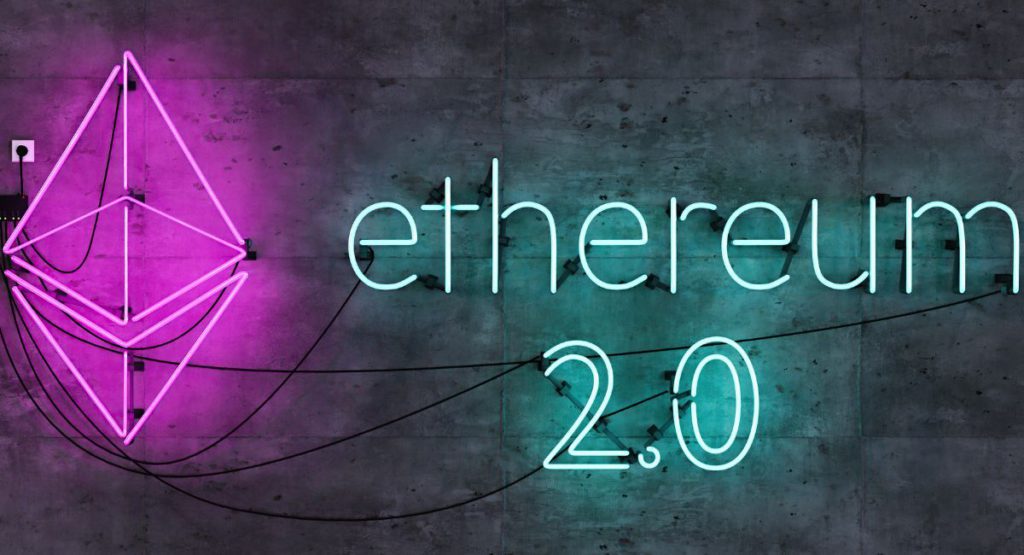Top 10 Ethereum Development That Changed The Course Of Time

Ethereum is a decentralized open-source blockchain platform that was launched in 2015. It enables developers to build decentralized applications (dApps) and smart contracts on its blockchain network. Ethereum has quickly become one of the most popular blockchain platforms due to its flexibility, scalability, and security and with time since its launch, Ethereum development changed the course of time for the blockchain ecosystem.
Let’s discuss the top 10 Ethereum developments that have taken place so far

1. Launch of Ethereum
The launch of Ethereum in 2015 was a significant development for the blockchain industry. It was the first blockchain platform that allowed developers to build decentralized applications and smart contracts on top of its blockchain network. Ethereum’s launch paved the way for the creation of many blockchain-based projects and decentralized applications that we see today.
2. Introduction of Solidity
Solidity is a contract-oriented programming language specifically designed to develop smart contracts on the Ethereum blockchain. It was introduced in 2015 and has become the most popular programming language for developing smart contracts on Ethereum. Solidity has made it easier for developers to build complex smart contracts on the Ethereum blockchain.
3. Development of ERC-20 Standard
ERC-20 is a technical standard used for creating and implementing tokens on the Ethereum blockchain. It was introduced in 2015 and has become the most widely adopted token standard on Ethereum. The ERC-20 standard has made it easier for developers to create their own tokens on Ethereum, leading to many new blockchain-based projects.
4. Development of the Ethereum Virtual Machine
The Ethereum Virtual Machine (EVM) is a decentralized runtime environment that executes smart contracts on the Ethereum blockchain. It was introduced in 2015 and has become an integral part of the Ethereum platform. The EVM has made it possible for developers to build complex decentralized applications and smart contracts on the Ethereum blockchain.
“Optimistic rollup technology is just more mature, While ZK-Rollups are faster, one thing that ZK-Rollups lack is an Ethereum Virtual Machine (EVM), making them hard to run decentralized applications like DeFi protocols.” -Vitalik Buterin$ARB $100 @arbitrum pic.twitter.com/1gg9RWNvTY
— Bugsy (💙,🧡) (@EthereumMaxima2) April 4, 2023
5. Introduction of Proof of Stake
Proof of Stake (PoS) is a consensus algorithm used by Ethereum to validate transactions and create new blocks on the blockchain. It was introduced in 2017 as an alternative to Proof of Work (PoW) algorithm used by Bitcoin. PoS has many advantages over PoW, including lower energy consumption, reduced centralization, and improved scalability.
6. Introduction of the Ethereum Name Service
The Ethereum Name Service (ENS) is a decentralized domain name system that enables users to register human-readable names for Ethereum addresses. It was introduced in 2017 and has become an integral part of the Ethereum ecosystem. The ENS has made it easier for users to interact with the Ethereum blockchain by simplifying the process of sending and receiving Ethereum transactions.
7. Development of the Raiden Network
The Raiden Network is a layer-two scaling solution for the Ethereum blockchain. It was introduced in 2017 and has become an important development for the Ethereum ecosystem. The Raiden Network allows for fast, cheap, and scalable transactions on the Ethereum blockchain, which has made it easier for developers to build decentralized applications.
8. Introduction of the Ethereum Improvement Proposal Process
The Ethereum Improvement Proposal (EIP) process is a community-driven process that allows developers to propose improvements to the Ethereum platform. It was introduced in 2015 and has become an important part of the Ethereum ecosystem. The EIP process has made it possible for developers to contribute to the development of the Ethereum platform and has led to many important improvements to the platform.
9. Development of the Ethereum 2.0 Upgrade
The Ethereum 2.0 upgrade, also known as Serenity, is a major milestone in the development of the Ethereum network. It aims to address some of the scalability and energy efficiency issues of the current Ethereum network while also improving security.
One of the key changes in Ethereum 2.0 is the introduction of a new consensus mechanism called Proof of Stake (PoS), which will replace the current Proof of Work (PoW) mechanism. PoS is a more energy-efficient consensus mechanism that does not require miners to perform complex mathematical calculations, as is the case with PoW. Instead, PoS relies on validators to verify transactions and add new blocks to the blockchain. Validators are required to stake a certain amount of Ether (ETH) as collateral, which is forfeited if they act maliciously.
Another important change in Ethereum 2.0 is the introduction of shard chains. The current Ethereum network operates as a single chain, which means that all nodes must process all transactions. This limits the scalability of the network and can lead to high gas fees during periods of high network activity. Shard chains, on the other hand, allow the network to be split into smaller chains, each of which can process transactions independently. This increases the network’s capacity to process transactions, making it more scalable and reducing gas fees.
Ethereum 2.0 will also introduce a new virtual machine called eWASM (Ethereum WebAssembly), which is designed to improve the efficiency of smart contract execution. eWASM is a more efficient and flexible virtual machine than the current Ethereum Virtual Machine (EVM) and will enable developers to write smart contracts in a wider range of programming languages.
The Ethereum 2.0 upgrade is being implemented in phases, with each phase introducing new features and improvements. The first phase, Phase 0, launched in December 2020 and introduced the Beacon Chain, the backbone of the Ethereum 2.0 network. The Beacon Chain coordinates the validators and shard chains and is responsible for managing the network’s consensus.
Phase 1 is expected to launch in 2021 and introduce shard chains, allowing the network to process more transactions. Phase 2 will introduce further improvements to the network, including the introduction of smart contract execution on shard chains.
Also, read – Top 5 Queries And Their Answers To Decentralized Domain Names
10. Smart Contract Templates
Smart contract templates are pre-built code templates that make it easier for developers to create smart contracts on the Ethereum network. These templates can be customized and modified to suit different use cases, reducing the amount of time and effort required to develop smart contracts.
What makes ethereum special and what is its future?

Ethereum is a groundbreaking blockchain platform that has played a pivotal role in shaping the decentralized finance (DeFi) and non-fungible token (NFT) ecosystems. Several features make Ethereum special, and its future looks promising due to ongoing developments and upgrades. Here are key aspects that set Ethereum apart and contribute to its future potential:
1. Smart Contracts and Decentralized Applications (DApps):
Ethereum introduced the concept of smart contracts, self-executing agreements with the terms of the contract directly written into code. This innovation has fueled the development of decentralized applications, enabling a wide range of use cases, from finance to supply chain management.
2. Ethereum Virtual Machine (EVM):
The EVM allows developers to execute smart contracts on the Ethereum network. It provides a secure and isolated environment for running code, ensuring consistency across all nodes in the network. This standardization facilitates the creation and deployment of DApps.
3. ERC-20 and ERC-721 Standards:
Ethereum’s token standards, such as ERC-20 for fungible tokens and ERC-721 for non-fungible tokens (NFTs), have become industry standards. These standards provide a common framework for the creation and interaction of various tokens, contributing to the growth of the token economy.
4. Decentralized Finance (DeFi):
Ethereum has been a driving force behind the DeFi movement, offering decentralized financial services such as lending, borrowing, and trading. The programmability of smart contracts allows developers to create complex financial instruments and protocols without traditional intermediaries.
5. Upcoming Upgrades – Ethereum 2.0:
Ethereum is undergoing a major upgrade known as Ethereum 2.0, which aims to address scalability and energy efficiency concerns. The transition from a proof-of-work (PoW) to a proof-of-stake (PoS) consensus mechanism and the introduction of shard chains are expected to significantly improve the network’s performance.
6. Community and Development Ecosystem:
Ethereum boasts a vibrant and engaged community of developers, entrepreneurs, and enthusiasts. The robust ecosystem includes a wide range of projects, from decentralized exchanges (DEXs) to NFT platforms, contributing to the platform’s diversity and innovation.
7. Interoperability and Collaboration:
Ethereum has been at the forefront of collaborating with other blockchain projects. Initiatives like the Ethereum Community Fund and Ethereum Enterprise Alliance demonstrate a commitment to interoperability and collaboration, fostering a more connected blockchain ecosystem.
Future Outlook:

The future of Ethereum looks promising for several reasons:
- Scalability Improvements: Ethereum 2.0’s phased rollout is expected to significantly improve scalability, making the network more efficient and capable of handling a higher transaction volume.
- Broader Adoption: The continued growth of DeFi and NFTs, both largely built on Ethereum, indicates a trend toward broader adoption. Ethereum’s versatility and developer-friendly environment contribute to its attractiveness.
- Innovation and Upgrades: Ethereum’s commitment to ongoing upgrades and improvements ensures that the platform stays competitive and relevant in the rapidly evolving blockchain space.
- Transition to Proof-of-Stake: The move to a PoS consensus mechanism is anticipated to reduce energy consumption, aligning Ethereum with environmental sustainability goals.
While challenges such as scalability and gas fees exist, Ethereum’s continuous evolution and community-driven development make it well-positioned for a dynamic and impactful future in the blockchain industry.
Conclusion
The development of Ethereum has been a continuous process of innovation and improvement since its inception. The introduction of smart contracts and the ERC-20 token standard revolutionized the blockchain industry and paved the way for a new era of decentralized applications. The development of Ethereum has also led to the creation of a vibrant ecosystem of decentralized applications, tools, and services. The Ethereum community is constantly working to improve the network, and we can expect to see many more exciting developments in the future.




























































